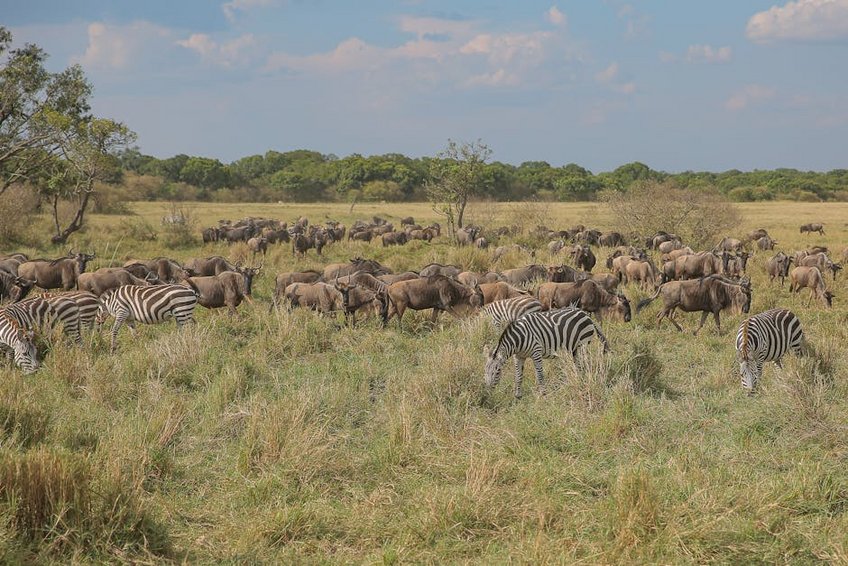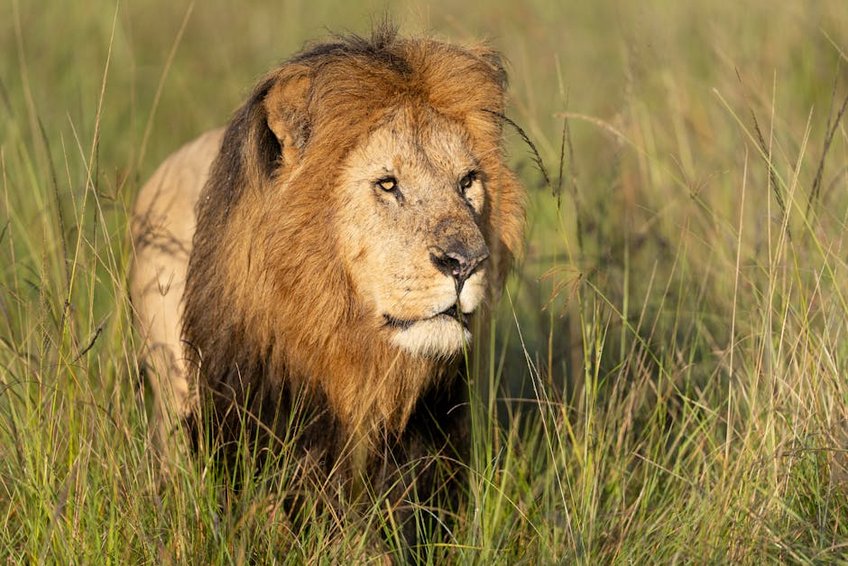Kenya Masai Mara Migration Season: Your Ultimate Safari Adventure
Experiencing the Kenya Masai Mara migration season is arguably one of the most spectacular wildlife events on Earth. This natural phenomenon, often called the Great Migration, sees over two million wildebeest, zebra, and gazelle journey from Tanzania’s Serengeti to Kenya’s Masai Mara in search of greener pastures. From July through October, the Mara becomes a dramatic stage for river crossings, predator action, and breathtaking wildlife encounters that will leave you in absolute awe. The sheer scale of movement, the thunderous hooves, and the constant cycle of life and death create an unforgettable spectacle that every wildlife enthusiast should witness at least once. Planning your trip during the Kenya Masai Mara migration season requires careful timing and preparation, but the rewards are absolutely worth every moment of planning and anticipation.
Kenya Masai Mara Migration Season Essential Information
Understanding the basics of the Kenya Masai Mara migration season will significantly enhance your safari experience. The migration isn’t a single event but a continuous cycle driven by rainfall patterns and grass growth. While the exact timing varies each year depending on weather conditions, the general pattern remains consistent. The animals typically arrive in the Mara around July and stay through October before beginning their return journey to the Serengeti. This period offers the most dramatic river crossings at the Mara River, where crocodiles await and the struggle for survival plays out in real time. You’ll witness nature’s raw beauty and brutality simultaneously, creating memories that will last a lifetime.
Migration Patterns and Timing – What You Need to Know
- The migration typically reaches the Masai Mara in July, with peak crossings occurring August through September
- Weather patterns significantly influence timing – earlier rains can bring animals sooner, while drought may delay arrival
- October usually marks the beginning of the return journey to the Serengeti as the short rains begin in Tanzania
- Budget safari: $200-350 per day including camping accommodation, group game drives, and park fees
- Mid-range option: $400-700 per day featuring comfortable lodges, better vehicles, and experienced guides
- Luxury experience: $800-1,500+ per day offering premium tented camps, private guides, and exclusive locations
- Kenya Wildlife Service – Masai Mara National Reserve
- Magical Kenya – Official Tourism Board
Wildlife Viewing Opportunities – Key Details
During the Kenya Masai Mara migration season, you’re not just watching wildebeest – you’re witnessing an entire ecosystem in motion. The massive herds attract predators including lions, leopards, cheetahs, and hyenas that follow the migration for easy hunting opportunities. You’ll also see numerous Nile crocodiles gathering at river crossing points, creating some of the most dramatic wildlife photography opportunities imaginable. Beyond the migration, the Mara supports resident wildlife year-round, including elephants, giraffes, and over 470 bird species, ensuring incredible game viewing even between river crossing events.

Kenya Masai Mara Migration Season Planning Your Trip
Planning your Kenya Masai Mara migration season adventure requires strategic thinking about timing, budget, and logistics. The peak season (July-October) sees highest demand and prices, so booking 6-12 months in advance is strongly recommended for the best lodges and guides. You’ll need to decide between different safari styles – from luxury tented camps with private guides to more economical group safari options. Consider combining your Mara experience with other Kenyan destinations like Lake Nakuru for rhino viewing or Amboseli for elephant herds against Kilimanjaro’s backdrop. Your travel dates should balance wildlife viewing opportunities with crowd levels and weather conditions.
Best Time to Visit Masai Mara Migration
The absolute best time for the Kenya Masai Mara migration season is late July through September when the largest river crossings typically occur. August offers the most consistent action with massive herds concentrated in the Mara, though this is also the busiest and most expensive period. September provides excellent viewing with slightly fewer visitors, while October offers the chance to see the beginning of the return migration with the added bonus of newborn animals. July can be unpredictable timing-wise but often has better pricing and availability if the herds arrive early.
Budget Planning and Costs
Essential Preparation Checklist
Preparing for your Kenya Masai Mara migration season adventure involves both practical and health considerations. You’ll need appropriate clothing in neutral colors (khaki, green, brown), including warm layers for chilly morning game drives. Essential gear includes binoculars, camera with zoom lens, sunscreen, and malaria prophylaxis. Most visitors require a Kenyan visa, which you can obtain online in advance or upon arrival. Ensure your vaccinations are up to date, including yellow fever if coming from affected countries. Travel insurance that covers medical evacuation is absolutely essential, as quality medical facilities are limited in the Mara region.
Kenya Masai Mara Migration Season Top Attractions and Activities
The Kenya Masai Mara migration season offers far more than just watching animals cross rivers. While the dramatic Mara River crossings understandably get most attention, the entire ecosystem comes alive during this period. You can experience hot air balloon safaris at dawn for breathtaking aerial views of the migrating herds, followed by champagne breakfasts in the bush. Cultural visits to Maasai villages provide insight into the indigenous people who have coexisted with wildlife for centuries. Night game drives (in private conservancies) reveal the nocturnal activities of predators and other creatures that become active after dark. Photography hides strategically placed near waterholes offer unique perspectives without disturbing the animals.
Must-See Highlights
No Kenya Masai Mara migration season experience is complete without witnessing at least one major river crossing. The Mara River crossings represent the migration’s most dramatic moments, where thousands of wildebeest brave crocodile-infested waters in chaotic, thrilling spectacles. The Musiara Marsh area is renowned for excellent predator action, particularly lion prides hunting the vulnerable migration herds. Lookout points like Paradise Plain provide panoramic views of the endless columns of animals stretching to the horizon. The Mara Triangle, separated by the Mara River, often has fewer vehicles and excellent wildlife density, making it worth the additional entry fee for a more exclusive experience.
Hidden Gems and Local Favorites
Beyond the famous river crossings, the Kenya Masai Mara migration season offers several less-crowded experiences worth seeking out. The Olare Orok Conservancy adjacent to the main reserve provides exclusive game viewing with limited vehicle numbers and excellent guiding. Early morning walking safaris with armed rangers offer intimate encounters with the bush and its smaller creatures often missed from vehicles. Visiting during the second week of September often means slightly fewer tourists as European summer holidays end, while wildlife action remains spectacular. The Talek River area sees smaller but equally dramatic crossings with far fewer vehicles than the famous Mara River crossing points.
Kenya Masai Mara Migration Season Practical Travel Information
Navigating the practical aspects of your Kenya Masai Mara migration season trip requires understanding the region’s infrastructure and options. The Mara is approximately 270 kilometers from Nairobi, accessible by road (5-6 hours) or domestic flight (45 minutes). Flying is strongly recommended to maximize your safari time and avoid rough road travel. Within the reserve, game drives are conducted in specialized 4×4 vehicles with pop-up roofs for optimal viewing. Accommodation ranges from basic campsites to ultra-luxurious tented camps with all modern amenities. The reserve has limited connectivity, so prepare to disconnect from the digital world and fully immerse yourself in the wildlife experience.
| Category | Options/Features | Price Range (USD) |
|---|---|---|
| Accommodation | Luxury tented camps with full amenities | $600-1,200 per night |
| Transport | Domestic flights from Nairobi to Mara | $250-400 roundtrip |
| Park Fees | Masai Mara National Reserve entry | $80 per person per day |
| Guided Safari | Private guide with vehicle | $300-500 per day |


